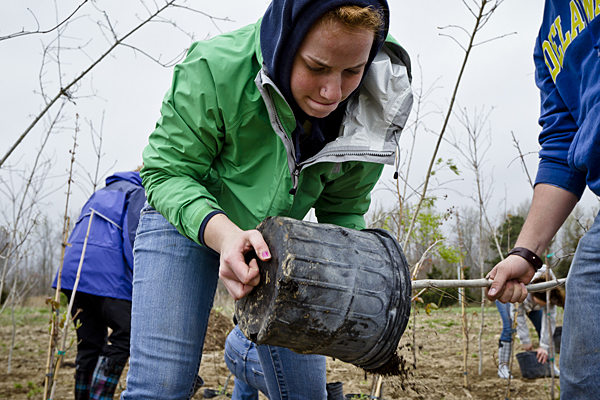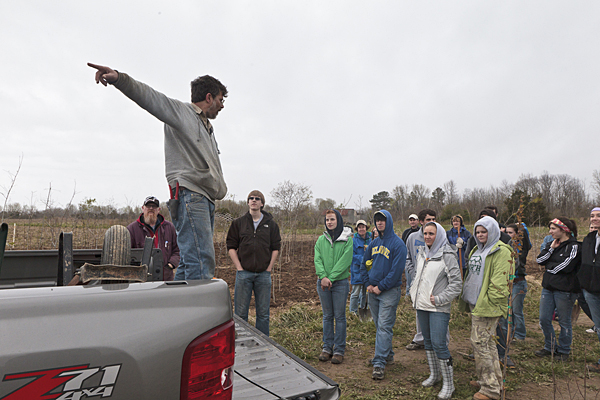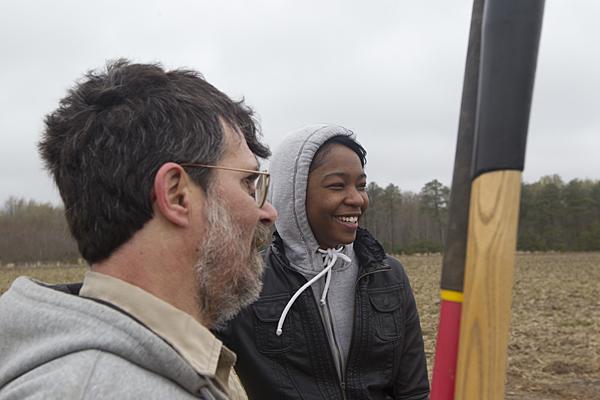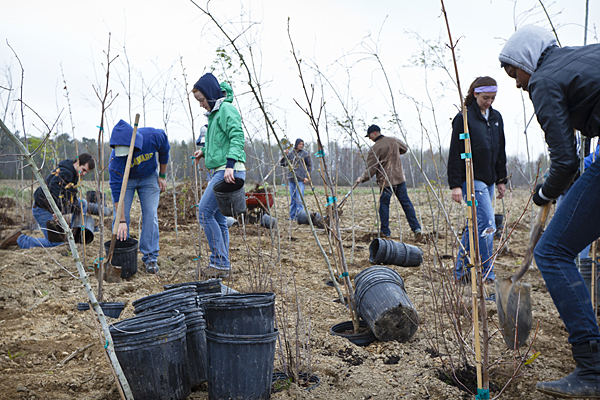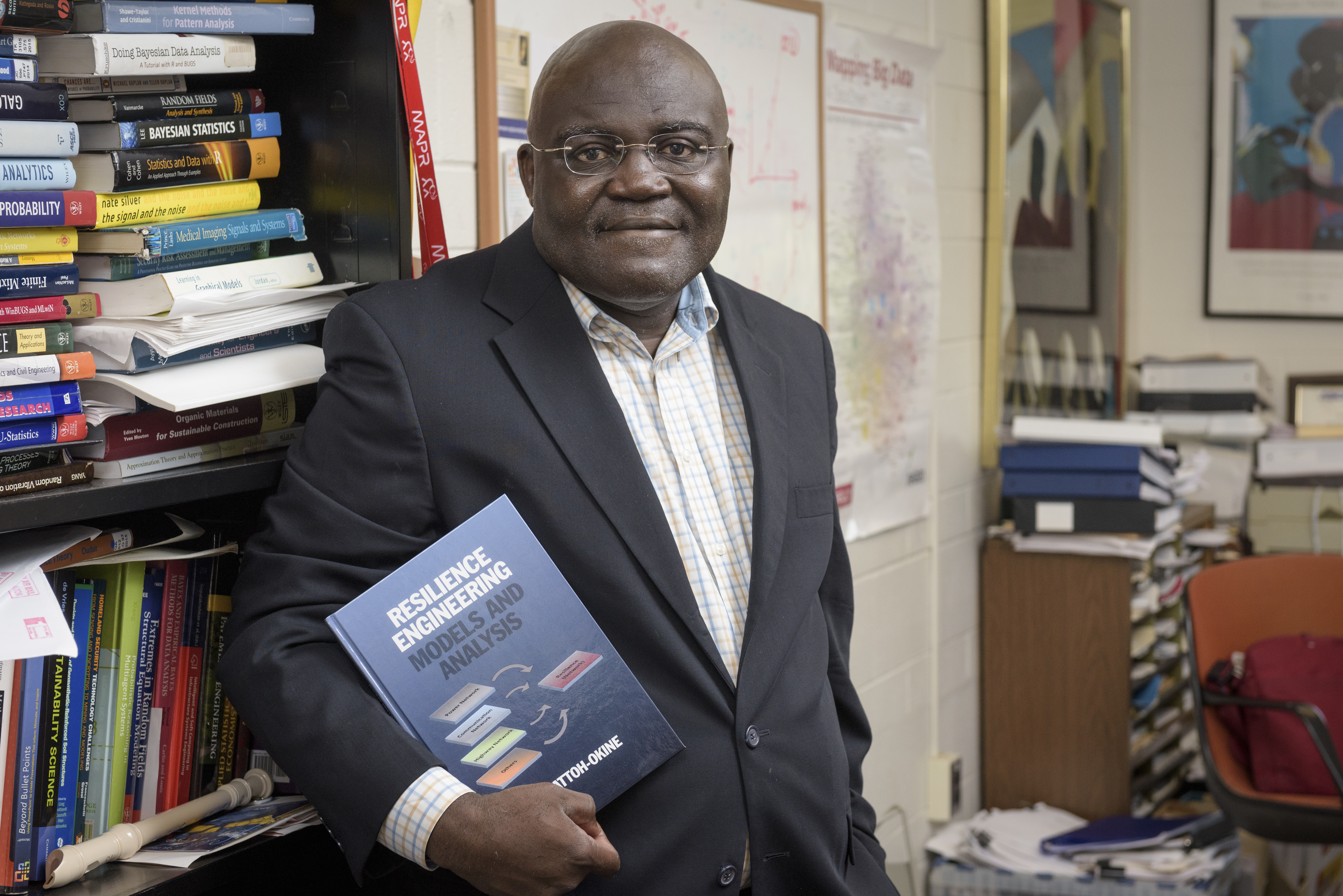Carbon sequestration
UD students plant trees to sequester carbon in Milford Neck
8:27 a.m., April 21, 2011--University of Delaware Professor Kent Messer and his students went to the state's Milford Neck region on Saturday, April 16, to start a project that aims to plant more than 55,000 trees over a 60-acre plot of land -- work that will result in the sequestration of an estimated 17,500 tons of carbon.
The team planted 5,000 trees in the initial weekend and, in addition to carbon sequestration, Messer said the trees will provide direct benefits for biodiversity and water quality in the region.
People Stories
'Resilience Engineering'
Reviresco June run
Messer, assistant professor of food and resource economics in UD's College of Agriculture and Natural Resources, jumped at the opportunity to have his students gain valuable hands-on sustainable development experience while also providing a beneficial service to the environment.
“I want my students to not only learn in the classroom, but also to get involved with environmental projects in the local community and region," he said.
The Nature Conservancy, a conservation organization aimed at protecting ecologically important lands and waters for nature and people, is leading the project, with Astra Zeneca partnering. Additional funds are coming from the Regional Greenhouse Gas Initiative (RGGI), the first market-based regulatory program in the United States to reduce greenhouse gas emissions.
Katherine Hackett, executive director of Delaware Wild Lands who was formerly with the Nature Conservancy, wrote the grant proposal for the project and said that because Delaware is part of RGGI, and because the Nature Conservancy is generally interested in reforesting properties, it made sense to combine the two goals.
“The state has a grant program to reduce carbon, the Nature Conservancy wanted to grow trees to improve ecosystem health, so it was a wonderful, natural marriage," she said.
As far as carbon sequestration goes, Hackett explained that trees are well equipped for the job.
“When a tree grows, it sequesters carbon," she said. "The carbon comes out of the atmosphere and is used by the tree to generate fiber. As it grows, the tree is sucking out carbon from the air and soil, so it’s sequestering carbon and removing it from the environment.”
The group will plant the trees in traditional rows, as well as in what they refer to as "habitat islands."
Hackett explained that the trees’ vulnerability played a big role in the decision to use habitat islands, as did the fact that the group can plant fewer trees but still expect quicker and more effective reforestation.
“Little trees are vulnerable. They are susceptible to drought and flooding, deer over browsing, so the Nature Conservancy will do some of the typical planting a row of trees, but will continue with some pioneering replanting methods called habitat islands," she said.
The idea behind habitat islands is that instead of planting lots of small trees in rows, larger trees are purchased and those trees are planted in clumps around the property.
Said Hackett, “Those larger trees bring in birds faster because they can support them, and they produce a food source for the birds. The birds disperse the seeds from the tree and then they get a faster regeneration all the way around.”
Messer said the Nature Conservancy and other groups have already had a great amount of success with habitat islands.
“I am impressed by the results of the Nature Conservancy’s habitat islands for restoring the health of forests and carbon sequestration," he said. "By planting more mature trees in clusters, the result is faster reforestation overall.”
Messer said he is thrilled with the many beneficial aspects of the project, including the environmental benefit for the public, the learning aspect for the UD students and the fact that it will help offset climate change for future generations.
Hackett plans to use this habitat island approach with her new organization, Delaware Wild Lands, and is hopeful the project will eventually become a model for habit improvement and carbon sequestration not only in Delaware but throughout the Northeast.
Article by Adam Thomas
Photos by Brian G. Peters/Nature Conservancy






